Did you know there are seven main guava types, each with its special taste? Guava types range from sweet to tangy, and they’re packed with health benefits that might surprise you.
This tropical fruit can make your meals more exciting while boosting your health.
In this blog, we’ll learn about the different types of guava —from Apple to Grape. You’ll know what makes each type stand out, how they taste, and the best ways to eat them.
We’ll also cover tips for growing your guava trees and their amazing health benefits.
By the time you finish reading, you’ll be ready to pick the perfect guava types for your next snack or garden project.
Most Famous Types of Guava
1. Apple Guava
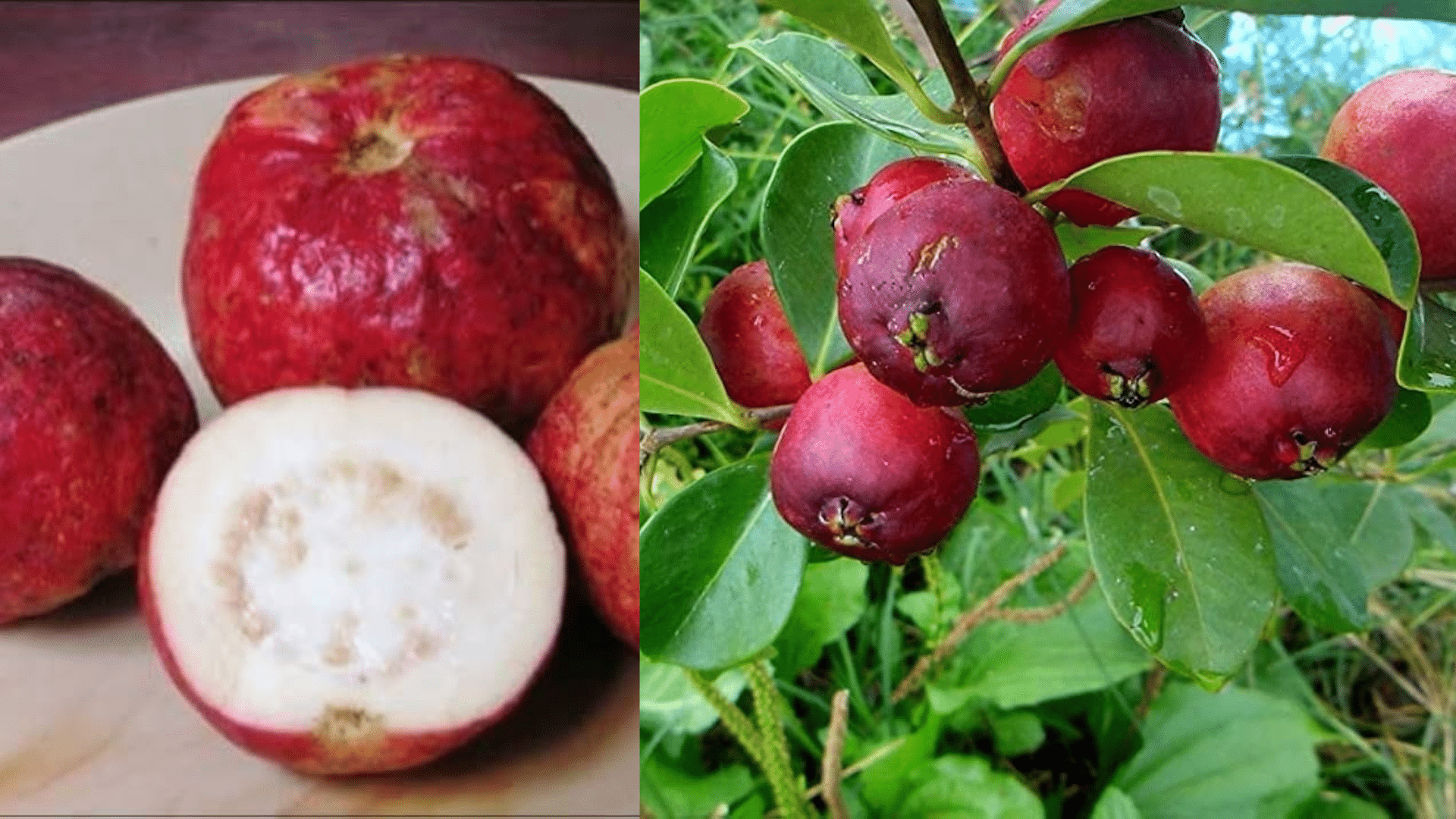
Apple guava has a sweet, mild flavor with a crunchy texture. The flesh is white and slightly grainy, making it perfect for a refreshing snack.
Ideal Uses: It’s commonly used in smoothies, fruit salads or eaten fresh.
Nutritional Benefit: Packed with Vitamin C and fiber, it supports immune function and digestion.
Growing Tip: It grows best in tropical and subtropical climates with well-drained soil. Ensure it gets plenty of sunlight for healthy growth.
2. Strawberry Guava
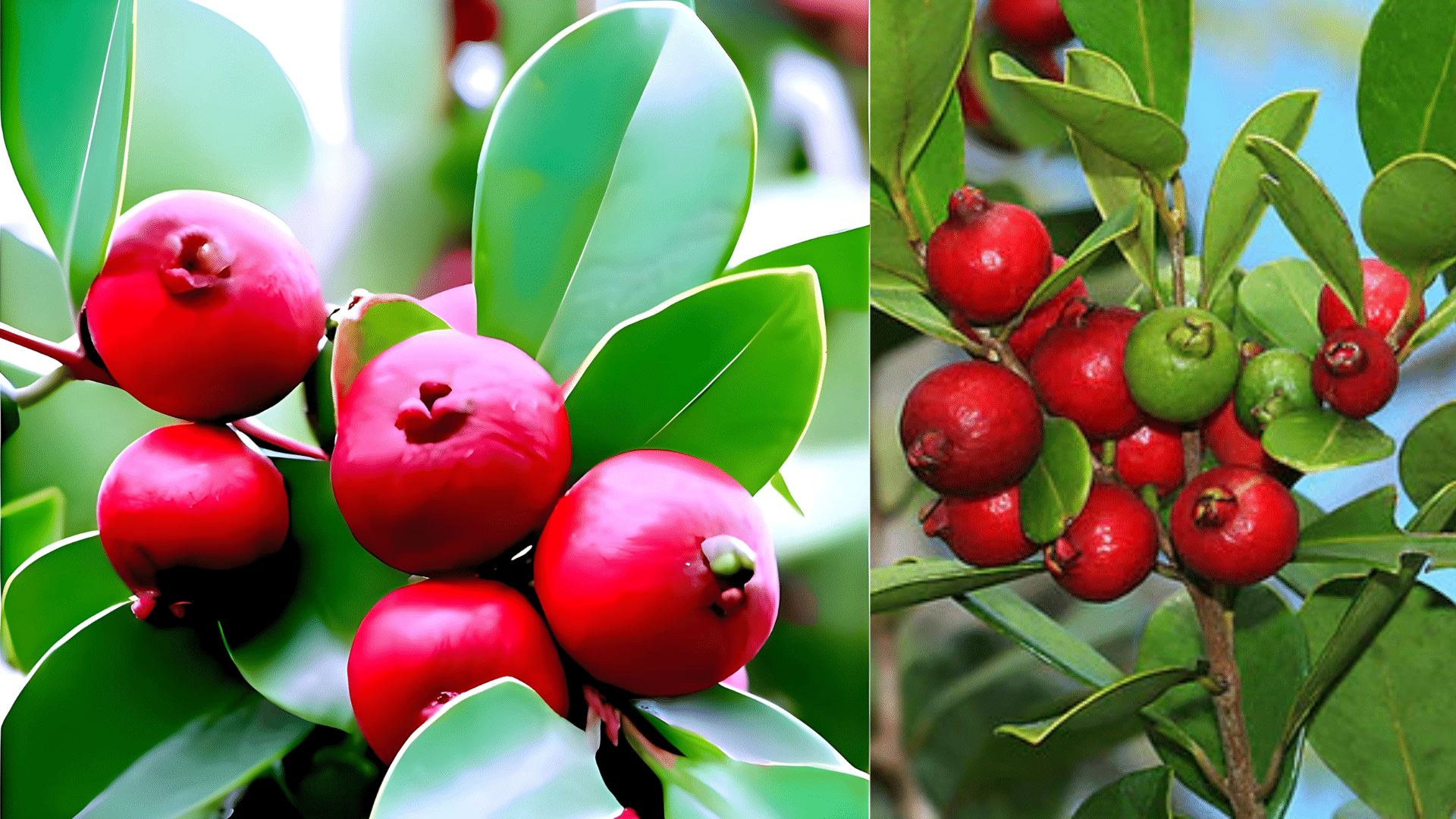
Strawberry guava has a sweet, berry-like flavor, small and round with a pinkish hue. Its flavor is similar to strawberries but with a tropical twist.
Ideal Uses: Ideal for jams, preserves, sauces, and smoothies.
Nutritional Benefit: Rich in antioxidants, Vitamin C, and fiber, supporting digestion and immune health.
Growing Tip: Prefers tropical climates with well-drained soil. While it’s drought-tolerant, regular watering will improve fruit production.
3. Pineapple Guava
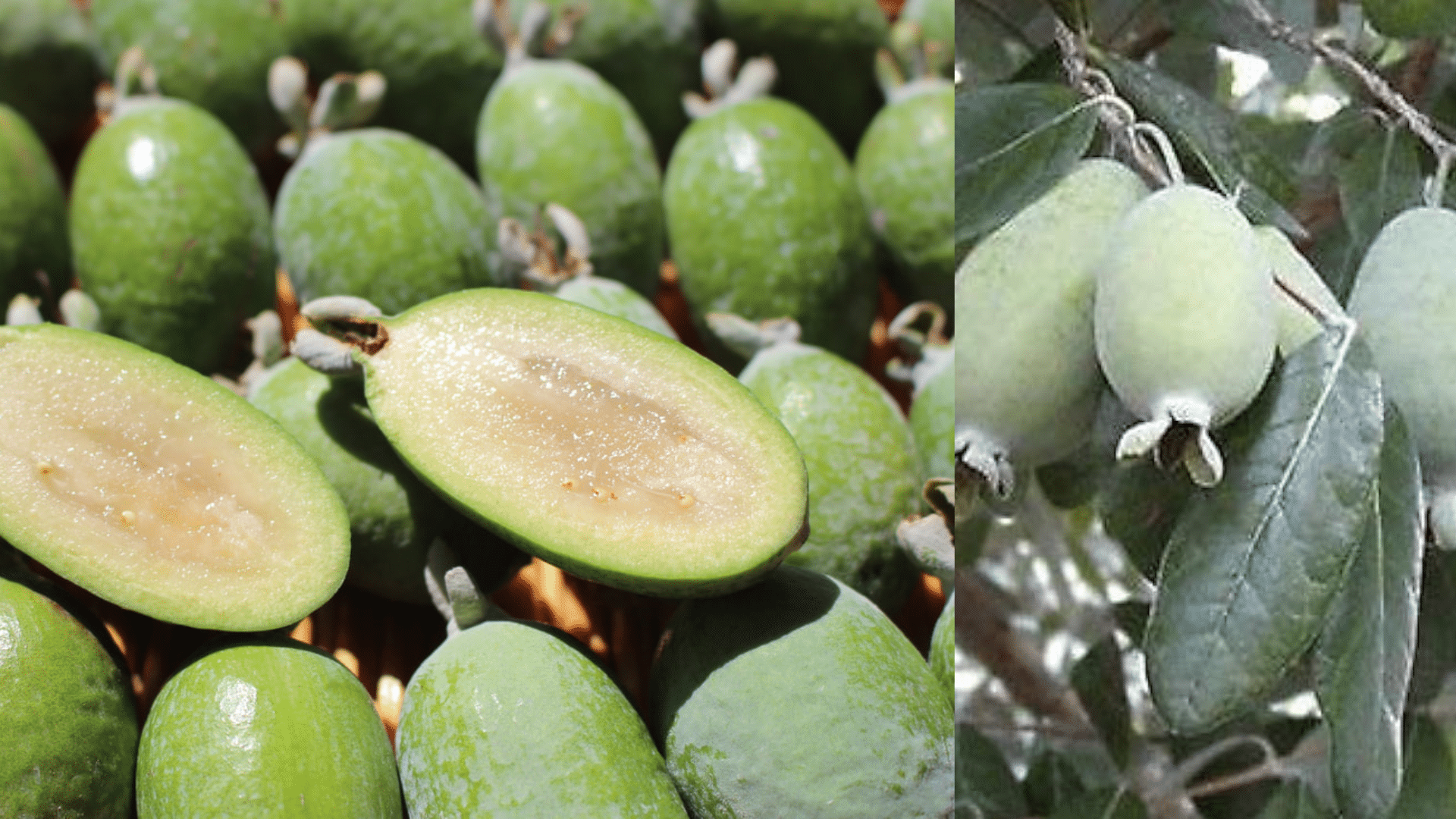
This variety has a tangy-sweet taste with a hint of pineapple. Due to its unique flavor profile, it’s often referred to as feijoa.
Ideal Uses: Best used for juices, smoothies, and tropical desserts.
Nutritional Benefit: Contains high levels of Vitamin C and antioxidants, which promote skin health and protect against oxidative stress.
Growing Tip: Thrives in sunny locations with well-drained, slightly acidic soil. Regular watering is key, but avoid waterlogging.
4. Yellow Guava
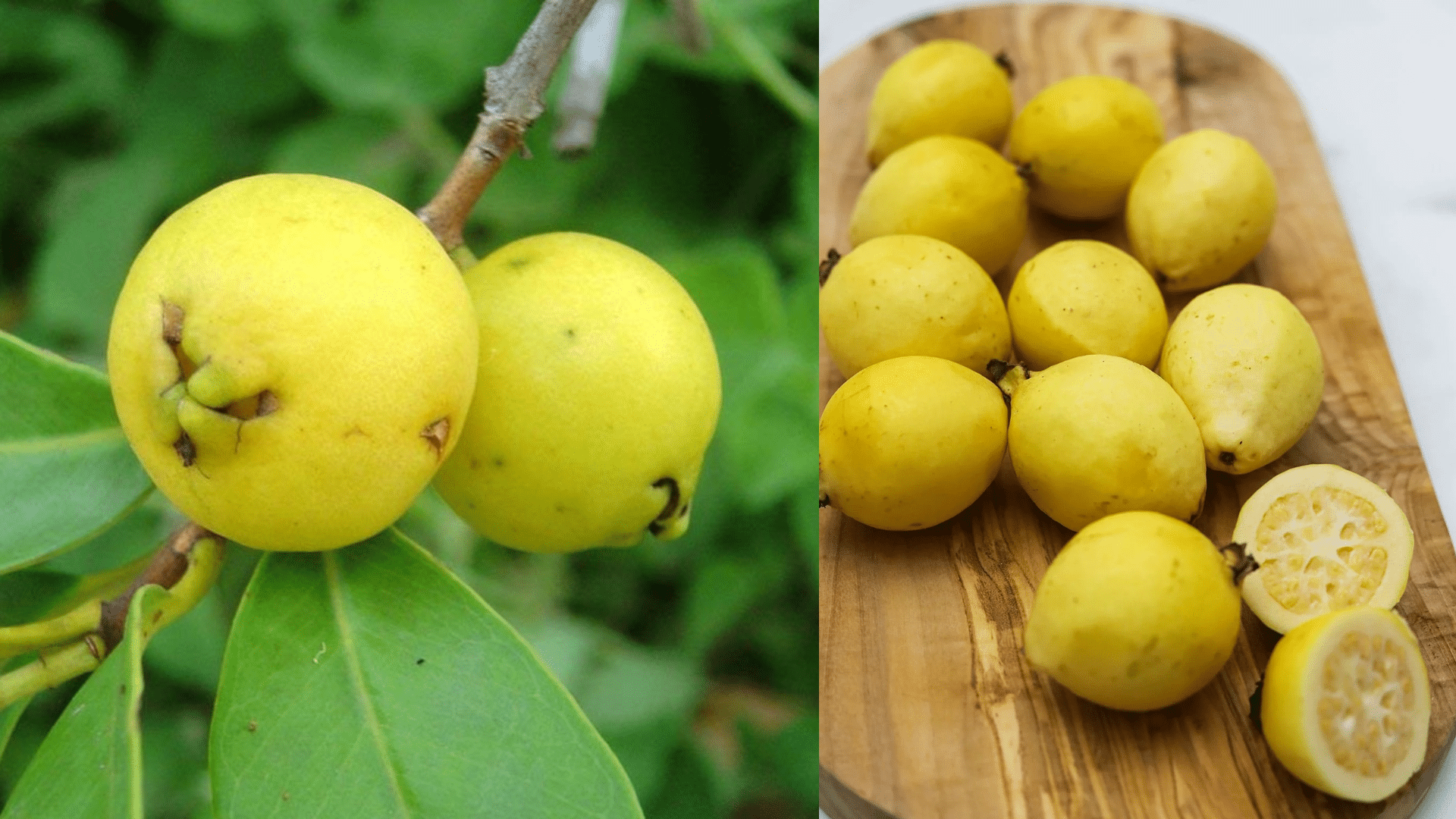
Yellow guava has a soft, sweet flavor and a smooth texture with pale yellow skin. The taste is mildly tangy and very aromatic.
Ideal Uses: Great for fresh eating, desserts, or making refreshing juices.
Nutritional Benefit: High in Vitamin C and fiber, it aids in digestion and boosts the immune system.
Growing Tip: It prefers warm, tropical climates with sandy, well-drained soil. For optimal growth, it needs full sunlight and regular watering.
5. Ruby Supreme Guava
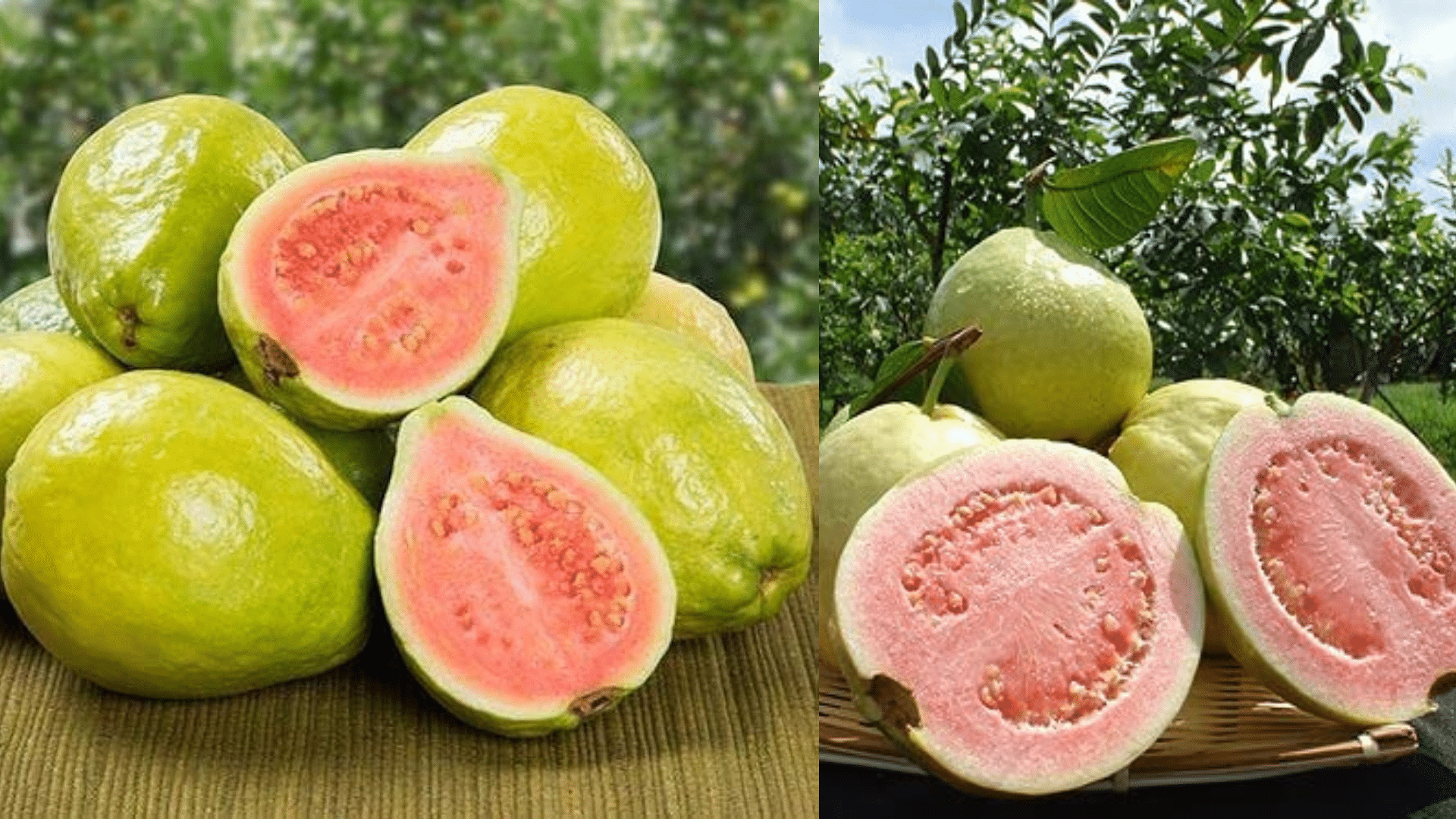
This guava features vibrant red flesh and a tangy-sweet flavor, offering a refreshing taste. Its soft texture is perfect for various dishes.
Ideal Uses: Commonly used in juices, jams, and smoothies.
Nutritional Benefit: Loaded with antioxidants, Vitamin C, and fiber, helping to enhance immunity and reduce inflammation.
Growing Tip: Requires warm, tropical conditions and rich, well-drained soil. It thrives under full sun and should be protected from frost.
6. Brazilian Guava
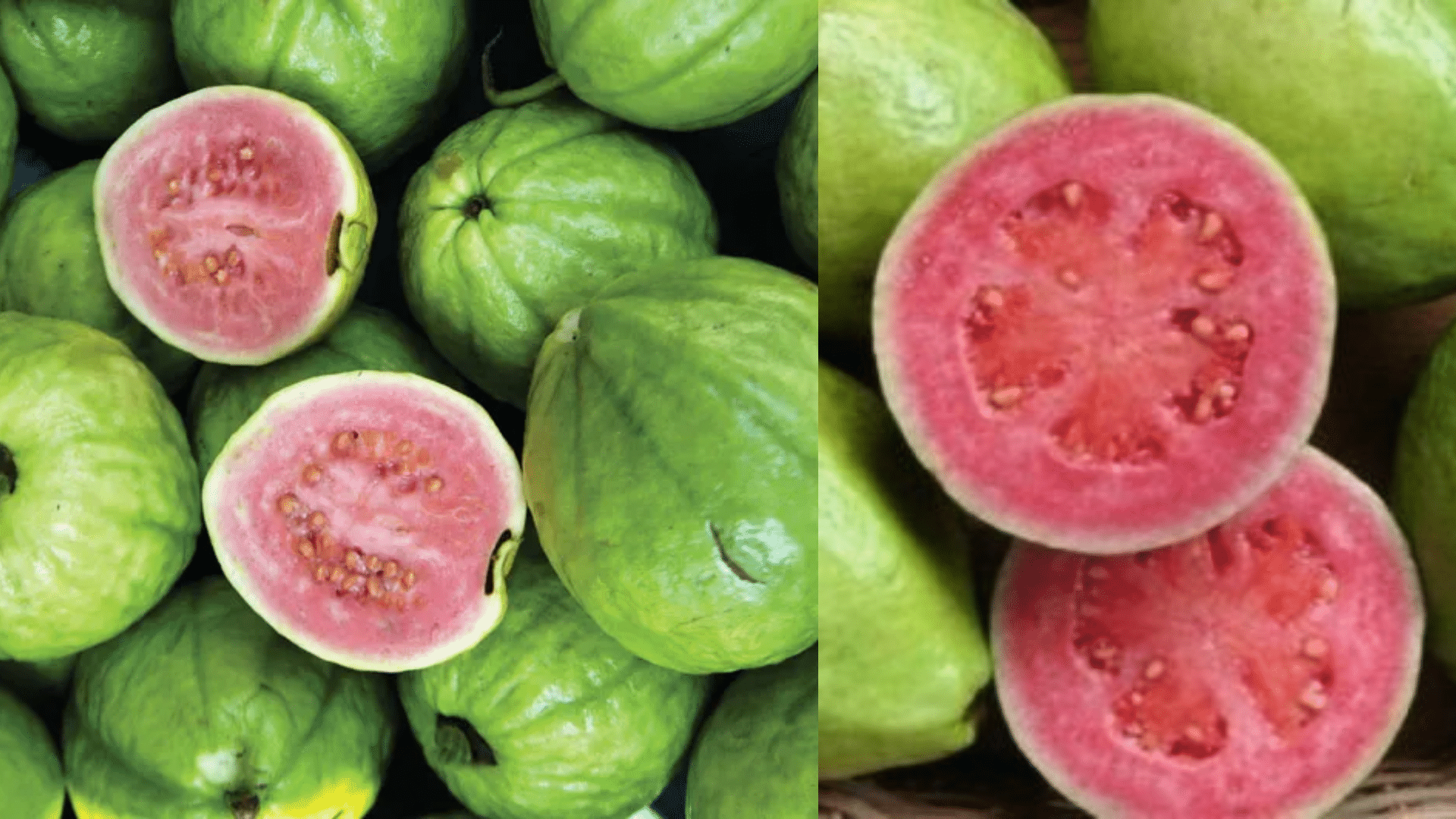
Known for its large, round shape, Brazilian guava has a sweet, floral flavor. Its smooth texture makes it perfect for fresh eating or desserts.
Ideal Uses: Perfect for fresh consumption, juices, or tropical fruit salads.
Nutritional Benefit: A good source of Vitamin C, fiber, and antioxidants, boosting the immune system and aiding digestion.
Growing Tip: It grows well in tropical and subtropical climates. For optimal growth, it requires full sun and regular watering.
7. Grape Guava
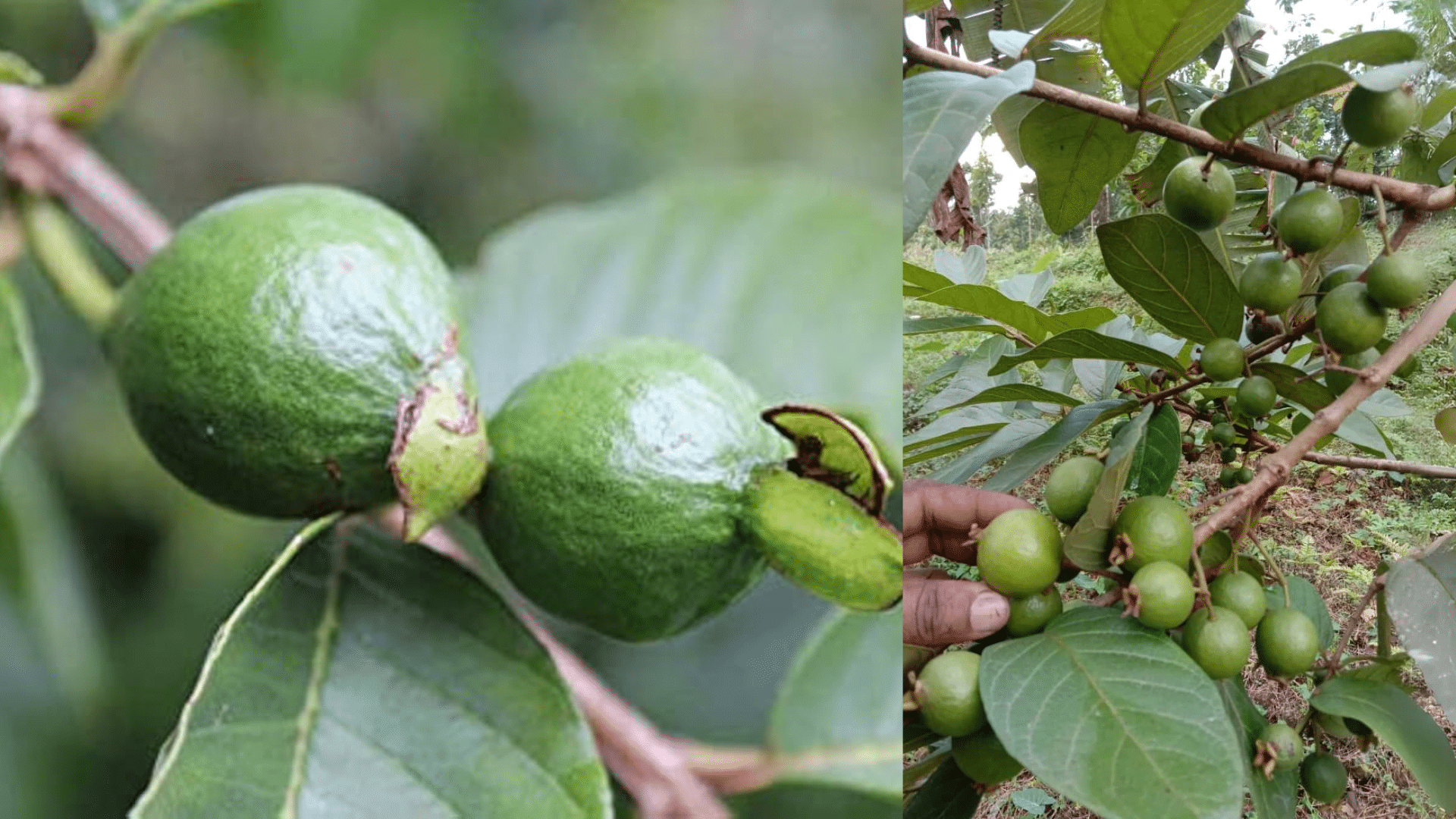
Grape guava is small and has a sweet, tangy flavor similar to that of grapes. It’s often bite-sized and offers a burst of tropical sweetness.
Ideal Uses: Best enjoyed fresh, in small fruit salads, or added to smoothies.
Nutritional Benefit: High in Vitamin C, antioxidants, and fiber, it helps with digestion and boosts immunity.
Growing Tip: This guava variety grows well in sunny tropical climates with well-drained soil. Ensure consistent watering to promote fruit development.
Nutritional Benefits of Guava
Guava is an excellent source of Vitamin C, fiber, and antioxidants, making it a powerful fruit for health.
Vitamin C helps strengthen the immune system, protecting against colds and infections.
Its fiber content aids digestion and promotes a healthy gut.
Additionally, the antioxidants in guava help reduce inflammation and fight free radicals, which protect your body from cellular damage.
Eating guava regularly can boost overall health and energy.
Guava Seasons and Availability
Guava seasons vary depending on the type and location. In tropical regions, guavas are often available year-round, with peak seasons typically from late summer to fall.
However, different varieties, such as Apple, Strawberry, and Ruby Supreme Guavas, may ripen at different times of the year.
For those looking to buy fresh guavas, local farmer’s markets, grocery stores, or specialized fruit shops are great options.
If you’re interested in growing guavas, nurseries that focus on tropical fruits or online stores offer guava trees.
Always choose varieties suited to your local climate for the best growth and fruiting results.
Growing Guavas
If you want to grow guavas, you can understand the process by going through the following points.
- Select the Right Variety: Choose a guava variety suited for your climate, such as tropical or subtropical varieties.
- Choose a Planting Site: Pick a sunny spot that gets at least 8 hours of sunlight each day.
- Prepare the Soil: Ensure the soil is well-drained and slightly acidic (pH 5.5–7). Mix organic matter for better drainage.
- Plant the Tree: Dig a hole twice the size of the root ball. Place the tree in the hole, ensuring the root crown is level with the soil surface, then fill it in with soil.
- Watering: Water deeply after planting and continue regular watering, keeping the soil moist but not waterlogged.
- Pruning: Trim young trees to encourage strong growth. Remove dead or damaged branches regularly.
- Monitor for Pests and Diseases: Look for pests like aphids and diseases like anthracnose. Use organic remedies when needed.
- Harvesting: Guavas typically bear fruit in 3–4 years. Harvest when the fruit is ripe, indicated by its color and sweet aroma.
Best Conditions for Growing Guavas & Common Pests
Guavas grow best in well-drained, slightly acidic soil. If your soil is heavy or clay-like, add sand or compost to help with drainage.
Water the tree regularly, especially in the first year, to encourage strong roots. However, do not let the soil stay too wet, as this can lead to root rot.
Guavas love warm tropical and subtropical climates, but they don’t do well with frost, so protect young trees from cold winds or freezing temperatures.
Natural remedies like neem oil can manage common pests like aphids, fruit flies, and mealybugs. Guavas are also susceptible to diseases like root rot and anthracnose, especially in wet conditions.
Keep your tree well-spaced for good airflow, prune it regularly, and remove any sick fruit or leaves. Organic pesticides can help if necessary.
How to Use Guava

You eat guava, but it can also be used in different ways.
- Juices: Guava is perfect for making refreshing juices, either on its own or blended with other fruits.
- Desserts: It can be used in pies, tarts, or puddings for a sweet, tropical flavor.
- Smoothies: Guava adds a rich taste to smoothies, making them both delicious and nutritious.
- Salads: Slice fresh guava and add it to fruit salads for a unique twist.
- Snacks: Enjoy guava fresh, dried, or cooked into jams or preserves.
Tips for Eating Guava
You can eat guava fresh by simply peeling and slicing it, enjoying the sweet and tangy taste.
If you prefer a longer shelf life, dried guava makes a great snack and is perfect for adding to trail mix or granola.
For those who enjoy cooking, guava can be used to make jams, jellies, or even savory dishes like salsas.
Another popular way to enjoy guava is in smoothies, where its unique flavor adds a tropical twist. It’s also a wonderful addition to fruit salads or desserts like pies and tarts.
Wrapping Up
Now you know about the many guava types and what makes each one special.
From the sweet Apple Guava to the tangy Strawberry Guava, there’s a type for every taste and use. Each guava type brings its mix of flavors and health benefits to your table.
Why not try adding guava to your next smoothie, fruit salad, or even homemade jam? If you live in a warm area with good sunlight, you can also plant a guava tree in your yard.
Visit your local market to find these fruits fresh, or look for guava products like juice or dried snacks.
The next time you see guava, you’ll know exactly which types to pick for your needs!













